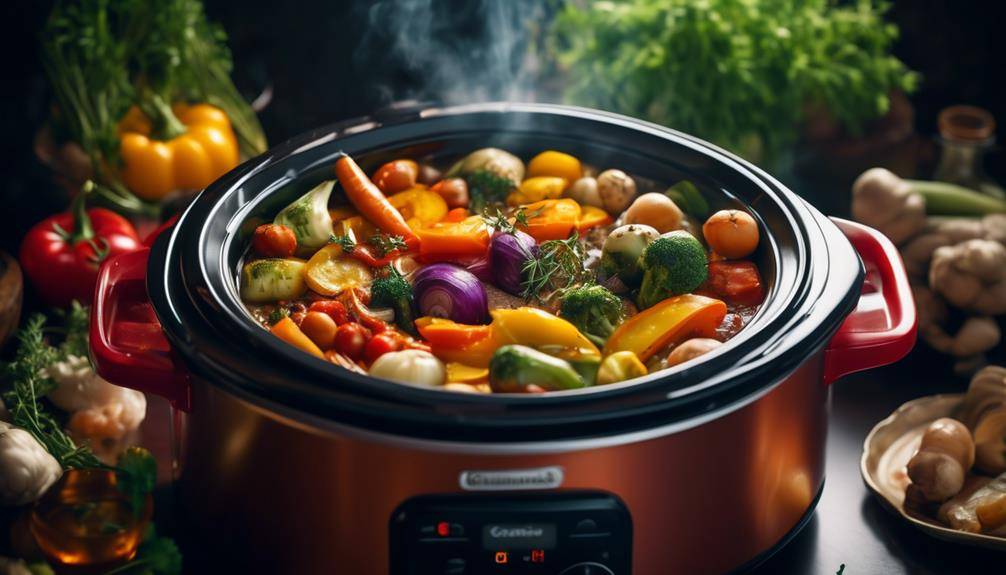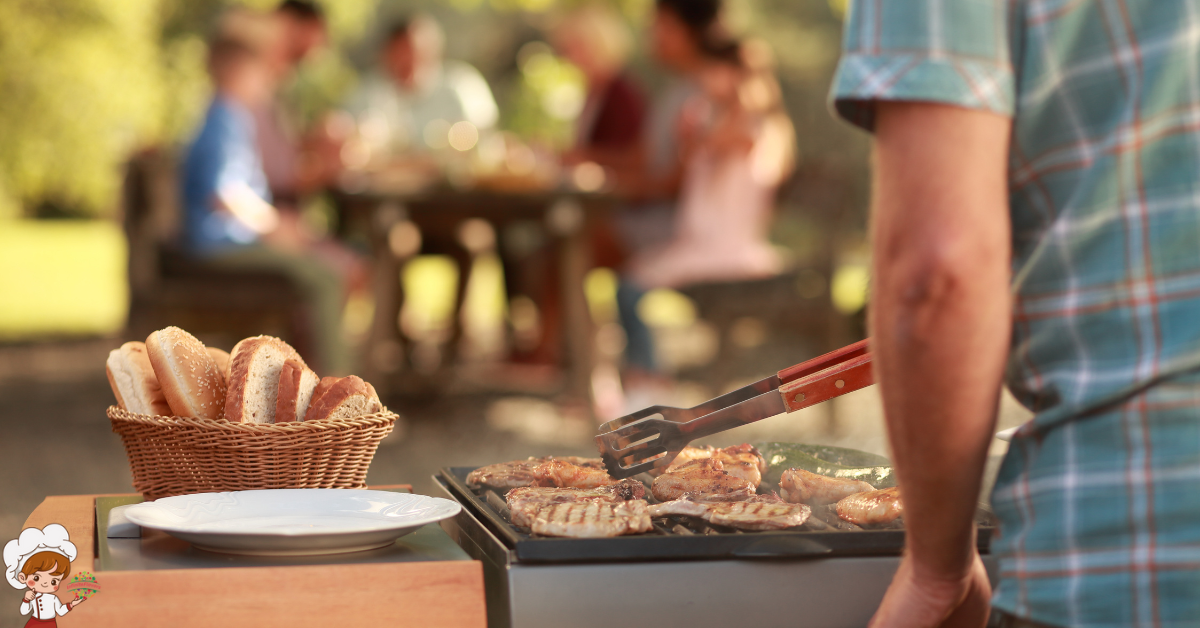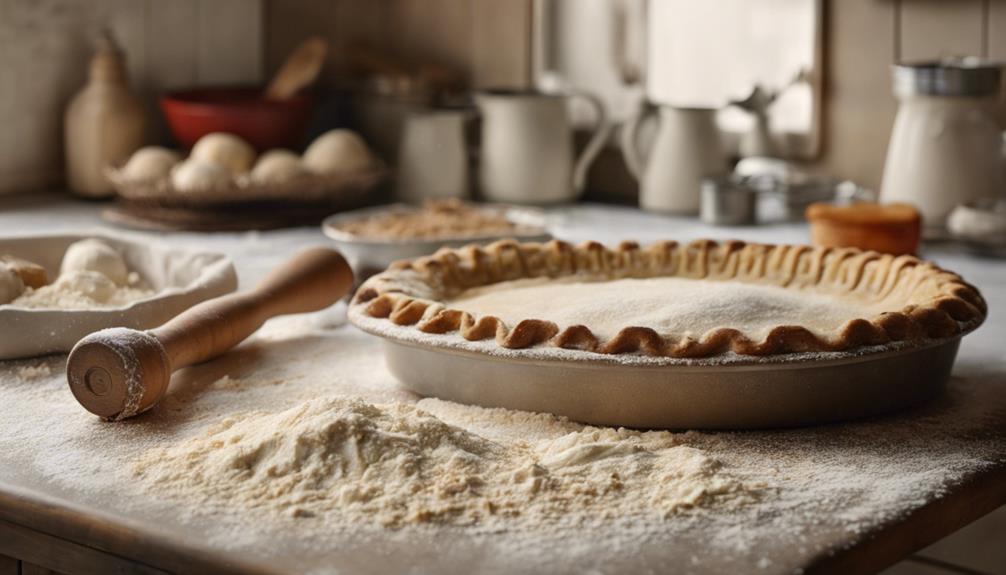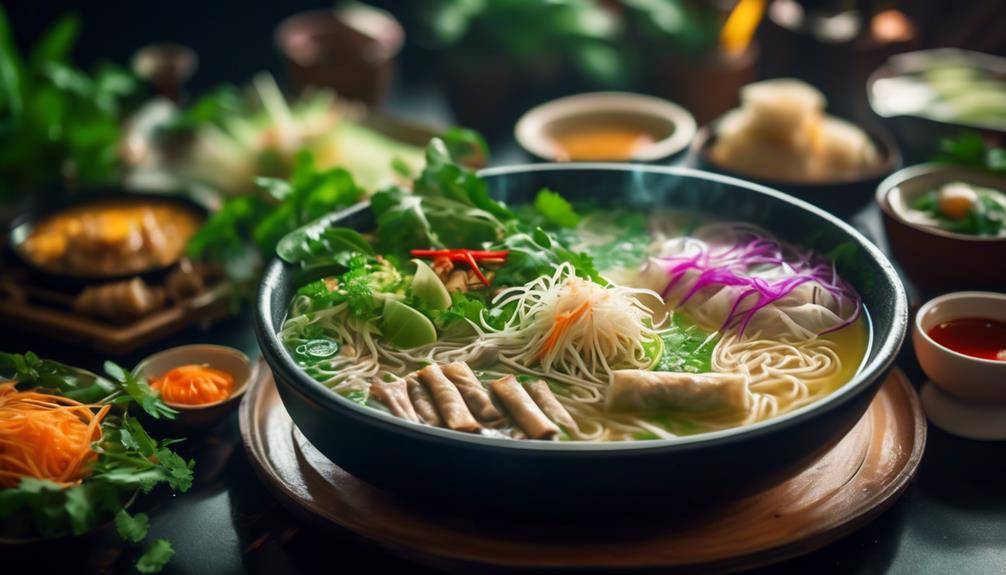The Best Meal Prep for Long Term Weight Loss
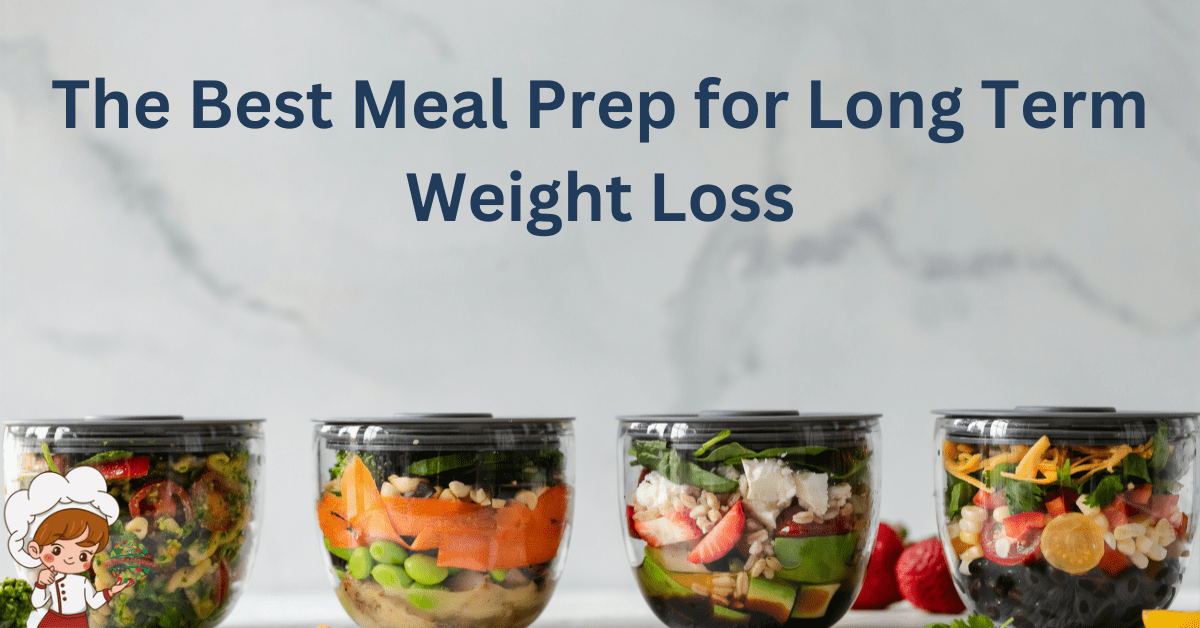
Meal Prep for Long Term Weight Loss; Imagine your weight loss journey as a puzzle, with each piece representing a crucial aspect of your success. One of the most important pieces is meal prep, a powerful tool that can help you achieve long-term weight loss and maintain a healthier lifestyle. But how exactly does meal prep fit into your puzzle? How can it contribute to your weight loss goals? In this discussion, we will uncover the benefits of meal prep, explore strategies for planning and preparing your meals, and discover how meal prep can become an essential part of your journey towards a healthier, happier you.
Benefits of Meal Prep
Meal prep offers numerous benefits that can help you achieve your weight loss goals effectively and efficiently. One of the key benefits of meal prep is that it allows you to set clear and specific goals for your weight loss journey. When you plan and prepare your meals in advance, you have the opportunity to carefully select ingredients and portion sizes that align with your desired calorie intake. This level of control and intentionality can greatly contribute to your weight loss success.
Another benefit of meal prep is that it helps you stay motivated throughout your weight loss journey. When you have healthy and delicious meals readily available, you are less likely to give in to temptation and make impulsive food choices. By having a pre-planned menu, you eliminate the need to constantly think about what to eat. This can reduce decision fatigue and keep you focused on your weight loss goals.
Additionally, meal prep allows you to save time and energy. By dedicating a specific time each week to prepare your meals, you can streamline your cooking process and ensure that you have nutritious options available at all times. This eliminates the need for last-minute trips to the grocery store or ordering takeout, both of which can derail your weight loss efforts.
Setting Realistic Weight Loss Goals
To ensure successful and sustainable weight loss, it is crucial to set realistic goals that are tailored to your individual needs and circumstances. Having realistic weight loss expectations is essential for long-term success. It’s important to remember that losing weight is a gradual process and not something that happens overnight.
When setting realistic weight loss goals, it’s essential to consider factors such as your current weight, height, age, and overall health. Consulting with a healthcare professional or a registered dietitian can help you determine a healthy weight range for your body type. Aim for a weight loss goal that is attainable and sustainable, such as losing 1-2 pounds per week. This gradual approach is more likely to lead to long-term success and prevent feelings of frustration or disappointment.
Tracking your progress is an effective way to stay motivated and monitor your weight loss journey. Keep a journal or use a mobile app to record your daily food intake, exercise routine, and any changes in your weight or body measurements. By tracking your progress, you can identify patterns, make adjustments to your meal plan or exercise routine if necessary, and celebrate your achievements along the way.
Remember that weight loss is not just about the number on the scale. Focus on other indicators of progress, such as increased energy levels, improved mood, or fitting into clothes better. Celebrate these non-scale victories, as they are just as important and can keep you motivated during your weight loss journey.
Planning Your Weekly Menu
Plan your weekly menu strategically to support your weight loss goals and make healthy eating a seamless part of your routine. Weekly planning is crucial for successful meal prep and effective weight management. By taking the time to plan your meals in advance, you can save time during the week, reduce stress, and ensure that you have nutritious options readily available.
Start by setting aside some time each week to plan your meals. Look at your schedule and consider any upcoming events or commitments that may impact your meal choices. Take inventory of your pantry and refrigerator, making note of any ingredients that need to be used up. Then, create a menu for the week, including a variety of fruits, vegetables, lean proteins, and whole grains. Aim for balanced meals that are rich in nutrients and low in calories.
To save even more time, consider batch cooking certain ingredients or dishes. For example, you can cook a large batch of chicken breast, roast a big tray of vegetables, or prepare a big pot of soup that can be portioned out for the week. This will not only save you time in the kitchen but also make it easier to assemble meals throughout the week.
Efficient time management is key when it comes to meal prep. Consider setting aside a specific time each week to grocery shop and another designated time for meal prep. This will help you stay organized and ensure that you have all the necessary ingredients on hand. By dedicating time to meal planning and preparation, you can avoid last-minute decisions and impulsive food choices.
Grocery Shopping for Meal Prep
When it comes to successfully implementing your meal prep plan, one crucial step is grocery shopping. Planning and organizing your meals for the week is important, but if you don’t have the right ingredients on hand, it can be challenging to stay on track. To help you make the most out of your grocery shopping experience, here are some tips to consider:
- Create a grocery budget: Before heading out to the store, it’s essential to set a budget for your groceries. This will help you prioritize your purchases and prevent overspending. Take a look at your meal plan and make a list of the ingredients you need, estimating their costs. Stick to your budget as much as possible to avoid unnecessary expenses.
- Meal plan before you shop: To ensure you buy everything you need and avoid impulse purchases, it’s crucial to plan your meals in advance. Take some time to sit down and create a detailed meal plan for the week. This will not only help you stay organized, but also prevent food waste and save you time and money in the long run.
Preparing and Portioning Your Meals
When it comes to portion control techniques for meal prep, there are a few strategies you can follow. One effective method is to use smaller plates and bowls to help control portion sizes. Additionally, you can use measuring cups or a food scale to ensure you’re accurately portioning your meals. These simple tips can make a big difference in managing your calorie intake and achieving your weight loss goals.
Portion Control Techniques
To achieve successful weight loss, it is crucial to master portion control techniques, ensuring that your meals are prepared and portioned appropriately. By implementing mindful eating techniques, you can develop a better understanding of your body’s hunger and fullness cues, leading to more controlled portion sizes. Here are two effective strategies to help you practice portion control:
- Use smaller plates and bowls: Research shows that people tend to eat more when they are presented with larger plates and bowls. By using smaller ones, you can trick your brain into thinking that you are consuming a substantial amount of food, even though the portion size is smaller.
- Measure your food: Investing in a food scale or using measuring cups and spoons can provide you with accurate portion sizes. This way, you can ensure that you are not overeating and consuming more calories than you intended.
Meal Prep Tips
Mastering portion control techniques is just the first step towards successful weight loss; now it’s time to dive into meal prep tips that will help you prepare and portion your meals effectively. To save time and make the process easier, here are some meal prep hacks and time-saving tips.
First, invest in good quality food storage containers. These will keep your meals fresh and organized, making it easier to portion them out. Next, plan your meals in advance and create a detailed grocery list. This will save you time at the store and ensure you have all the ingredients you need.
Consider batch cooking on weekends or your days off. Cook large quantities of proteins, grains, and vegetables that can be portioned out for the week. This will save you time during the busy workweek and make it easier to stick to your healthy eating plan.
Lastly, don’t forget to label your containers with the date and contents. This will help you keep track of what needs to be eaten first and prevent any food waste. By following these meal prep tips, you’ll be well on your way to successful long-term weight loss.
Proper Storage and Labeling
When it comes to meal prep for weight loss, proper storage and labeling are crucial for maintaining organization and ensuring the quality and safety of your meals. Clear and consistent labeling allows you to easily identify what each container contains and when it was prepared, helping you stay on track with your meal plan. Additionally, selecting the right containers that are appropriate for storing different types of foods can help extend their shelf life and prevent spoilage.
Importance of Organization
Proper storage and labeling are essential for maintaining organization in your meal prep routine, ensuring that you can easily access and identify your meals throughout the week. By implementing effective storage and labeling techniques, you can save time and reduce stress during meal times. Here are some important reasons why organization is crucial in meal prepping:
- Importance of planning:
- Organizing your meals in advance allows you to plan your grocery shopping efficiently, ensuring that you have all the necessary ingredients on hand.
- It helps you stick to your weight loss goals by preventing impulsive food choices and promoting healthier eating habits.
- Time management techniques:
- Proper storage and labeling enable you to quickly grab the meal you need, reducing the time spent searching for specific dishes.
- It also allows you to prep multiple meals at once, freeing up time for other important tasks or leisure activities.
Clear and Consistent Labeling
To maintain organization in your meal prep routine and ensure easy access to your meals throughout the week, it is crucial to have clear and consistent labeling for proper storage. Clear labeling allows you to quickly identify and locate specific meals, saving you time and reducing the risk of food waste. When labeling your containers, be sure to include the name of the dish, the date it was prepared, and any additional information such as allergens or special instructions.
Consistent labeling ensures that you follow a standardized system, making it easier to rotate and use your meals in the order they were prepared. By taking the time to label your meals properly, you can streamline your meal prep process and maintain a well-organized system for long-term weight loss success.
Proper Container Selection
Consider selecting containers that are both practical and suitable for proper storage and labeling in your meal prep routine. The right container options can make a significant difference in the success of your meal prep efforts. Here are a few meal prep hacks to help you choose the right containers:
- Portion control: Look for containers with compartments or dividers to easily separate different food groups and control portion sizes.
- Stackable and space-saving: Opt for containers that are stackable to maximize storage space in your refrigerator or freezer.
- Leak-proof and durable: Choose containers with secure lids to prevent any leaks or spills, and make sure they are made of durable materials that can withstand freezing and reheating.
Meal Prep on a Budget
When meal prepping on a tight budget, it’s essential to be strategic in order to get the most out of your ingredients and maximize your savings. But don’t worry, there are plenty of meal prep hacks and recipes that can help you achieve your weight loss goals without breaking the bank.
One of the best ways to meal prep on a budget is to plan your meals around affordable ingredients. Staples like rice, beans, lentils, and pasta are not only inexpensive but also versatile and filling. You can incorporate these ingredients into a variety of dishes, such as stir-fries, soups, and salads, to keep your meals interesting and flavorful.
Another cost-saving strategy is to buy in bulk. Purchasing ingredients like meat, poultry, and vegetables in larger quantities can often be cheaper per unit. You can then portion them out and freeze them for future use. This not only saves you money but also saves you time by having pre-prepared ingredients on hand.
Additionally, consider incorporating more plant-based meals into your meal prep routine. Plant-based proteins like tofu, tempeh, and legumes are often cheaper than animal proteins and can be just as nutritious. You can try recipes like lentil curry, chickpea salad, or tofu stir-fry to add variety to your meal plan.
Lastly, don’t forget about repurposing leftovers. Instead of letting them go to waste, get creative and transform them into new meals. For example, leftover roasted chicken can be used in sandwiches, wraps, or salads the next day.
Incorporating Variety and Balance
To ensure variety and balance in your meal prep for weight loss, focus on flavorful meal combinations that incorporate a variety of ingredients. Choose nutrient-rich options such as lean proteins, whole grains, and plenty of fruits and vegetables. Additionally, practice portion control strategies to maintain a balanced approach to your meals. By incorporating these points into your meal prep routine, you can enjoy a diverse range of flavors while still working towards your weight loss goals.
Flavorful Meal Combinations
Looking to add variety and balance to your meals while still keeping them flavorful? Incorporating flavorful seasoning combinations and creative recipe ideas can help you achieve this goal. Here are a few suggestions to spice up your meal prep routine:
- Seasoning Combinations:
- Try a mix of garlic powder, paprika, and cumin for a smoky flavor.
- Combine lemon zest, thyme, and black pepper for a refreshing twist.
- Creative Recipe Ideas:
- Make a colorful and nutritious Buddha bowl by combining roasted vegetables, quinoa, and a tangy homemade dressing.
- Opt for a Mexican-inspired stuffed pepper dish with ground turkey, black beans, corn, and a dash of chili powder.
These flavorful options will not only make your meals exciting but also provide you with a balanced and satisfying eating experience. Get creative with your ingredients and enjoy the benefits of delicious and nutritious meal preps.
Nutrient-Rich Ingredient Choices
Incorporating a variety of nutrient-rich ingredients is key to achieving balance and maximizing the nutritional value of your meal prep. Choosing ingredients that are high in nutrient density will help ensure that your body gets the essential vitamins, minerals, and antioxidants it needs to thrive. When planning your meals, aim for a mix of lean proteins, whole grains, fruits, vegetables, and healthy fats. For example, opt for chicken breast, quinoa, spinach, berries, and avocado.
To add flavor and variety, experiment with different spices, herbs, and condiments. Meal prep hacks such as batch cooking and pre-cutting vegetables can save you time and make it easier to stick to your healthy eating goals. Remember, a well-balanced meal prep is key to long-term weight loss success.
Portion Control Strategies
One effective way to manage portion sizes and promote variety and balance in your meal prep is by incorporating different types of foods. By using portion control techniques, you can ensure that you are eating the right amount of each food group without feeling deprived. Here are some meal prep tips to help you with portion control:
- Use smaller plates and bowls to visually trick your brain into thinking you are eating more.
- Measure your food using measuring cups or a food scale to get accurate portion sizes.
- For proteins, aim for 3-4 ounces per meal.
- Fill half of your plate with vegetables to increase fiber intake and promote fullness.
Time-Saving Strategies for Meal Prep
To save time when prepping meals for weight loss, streamline your process by organizing ingredients and utilizing time-saving techniques. Meal prep can be a time-consuming task, but with the right strategies, you can make it more efficient and enjoyable. Here are some time-saving tips and meal prep hacks that will help you save precious minutes in the kitchen.
First, plan your meals for the week ahead. Take a few minutes to decide what you want to eat and create a shopping list accordingly. This will ensure that you have all the ingredients you need and avoid last-minute trips to the grocery store.
Next, set aside a specific time each week for meal prep. Dedicate a few hours to chopping vegetables, cooking proteins, and portioning out your meals. By doing this all at once, you’ll save time throughout the week and have healthy meals ready to go.
Invest in some time-saving tools and appliances. For example, a slow cooker or an Instant Pot can be a game-changer when it comes to meal prep. You can simply throw in the ingredients, set the timer, and let it do the work for you. Additionally, having good quality knives and cutting boards will make chopping vegetables a breeze.
Another time-saving technique is to batch cook. Prepare larger quantities of certain dishes, such as soups, stews, or roasted vegetables, and portion them out for multiple meals. You can store them in the fridge or freezer and have them readily available when you need them.
Lastly, don’t be afraid to simplify your meals. Focus on recipes that require minimal preparation and cooking time. For example, salads, stir-fries, and sheet pan meals can be quick and easy to make.
Overcoming Challenges and Staying Motivated
Staying motivated and overcoming challenges can be key factors in successfully sticking to your meal prep routine for weight loss. It’s common to encounter obstacles along your weight loss journey, such as hitting plateaus or struggling to stay committed. However, with the right mindset and strategies, you can overcome these challenges and continue progressing towards your goals. Here are some practical tips to help you stay motivated and committed to your meal prep routine:
- Set realistic goals: Start by setting achievable and specific goals that align with your overall weight loss plan. Break them down into smaller milestones, allowing you to celebrate your progress along the way.
- Track your progress: Keep a record of your meals, workouts, and weigh-ins to track your progress. Seeing how far you’ve come can provide a sense of accomplishment and motivate you to keep going.
- Find a support system: Surround yourself with like-minded individuals who share your goals. Join online communities or find a workout buddy who can provide encouragement and accountability.
- Switch up your routine: Plateaus are a common occurrence during weight loss journeys. To overcome them, consider changing up your meal prep routine or trying new recipes to keep things exciting and prevent boredom.
- Reward yourself: Treat yourself to non-food rewards when you reach milestones or achieve your goals. This can motivate you to stay committed and provide a sense of accomplishment.
- Practice self-care: Taking care of your mental and physical well-being is crucial for staying motivated. Prioritize sleep, manage stress, and engage in activities that bring you joy and relaxation.
Meal Prep for Long Term Weight Loss; Frequently Asked Questions
How Many Meals Should I Prep in Advance for Long Term Weight Loss?
To achieve long term weight loss, it’s important to plan your meals in advance. Start by prepping a sufficient amount of meals that align with your calorie goals and dietary needs. This will help you stay on track and reap the benefits of meal prep. Use these meal prep tips to make the process easier and more effective.
Can I Freeze My Prepped Meals and How Long Can They Stay in the Freezer?
Yes, you can freeze your prepped meals for long term storage. Freezing helps preserve the quality and freshness of the meals. Generally, prepped meals can stay in the freezer for up to 3-4 months.
Are There Any Specific Meal Prep Tools or Containers That You Recommend for Long Term Weight Loss?
For long term weight loss, it’s important to have the right meal prep tools and containers. Look for portion control containers, glass containers for reheating, and a good quality lunch bag to keep your meals fresh.
How Can I Stay Motivated to Stick to My Meal Prep Routine for Long Term Weight Loss?
To stay motivated with your meal prep routine for long term weight loss, try finding support from a community or an accountability partner. Additionally, create variety in your meals to prevent boredom and keep your food choices interesting.
Can I Still Dine Out or Eat at Restaurants While Following a Meal Prep Plan for Long Term Weight Loss?
Yes, you can still dine out or eat at restaurants while following a meal prep plan for long term weight loss. Look for dining out options that align with your goals and consider meal prep alternatives when necessary.
Conclusion
In conclusion, meal prep is a practical and effective strategy for long-term weight loss. By planning your weekly menu, grocery shopping wisely, and preparing and portioning your meals in advance, you can save time, money, and calories. Incorporating variety and balance in your meals ensures you get all the necessary nutrients while avoiding monotony. Overcoming challenges and staying motivated is key in achieving your weight loss goals. So, start meal prepping today and enjoy the benefits of a healthier lifestyle.



